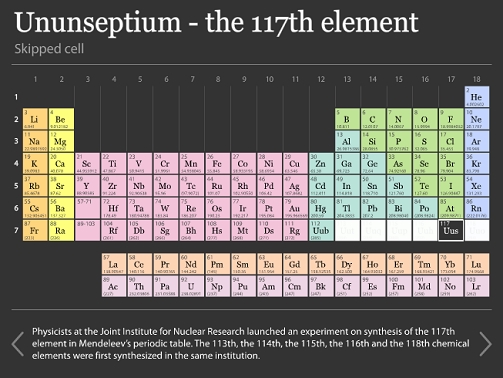
Physicists at the Joint Institute for Nuclear Research launched an experiment on synthesis of the 117th element in Mendeleev's periodic table.
The 113th, 114th, 115th, 116th and 118th chemical elements were first synthesized in the same institution.

All transuranium elements, starting from neptunium (93), where produced in three laboratories: in Berkley (U.S.), Dubna (USSR/Russia) and Darmstadt (Germany). USSR and USA competed in producing elements during the past century. Some elements were produced by Soviet and U.S. physicists simultaneously but separately from each other.
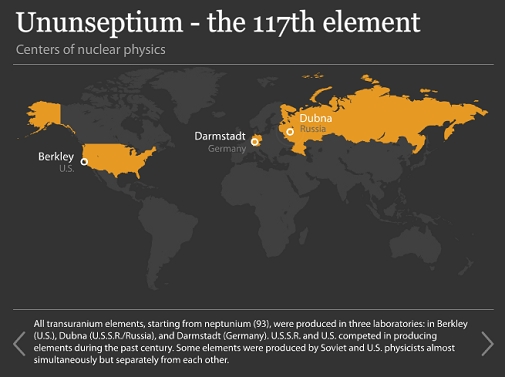
To synthesize ununseptium, another transuranium element, berkelium-249, is used. The experiment is carried out in a U-440 cyclotron. The synthesis process: moving at high velocity (1/10 of the speed of light), berkelium ions are ejected from a cyclotron and strike a target, where they are bombarded with calcium nuclei.
Ununseptium nuclei can be discovered among the products of the reaction.
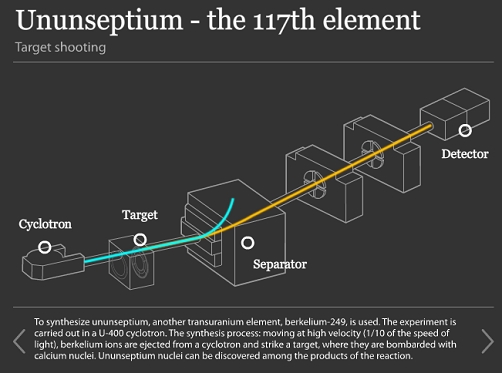
25 mg of berkelium-249 necessary for the experiment were provided by physicists from the U.S. Oak Ridge National Laboratory (ORNL). It was the first time the element had been synthesized in such a large amount. Its half-life period is 320 days, so synthesizing the element has to be completed in a short time.
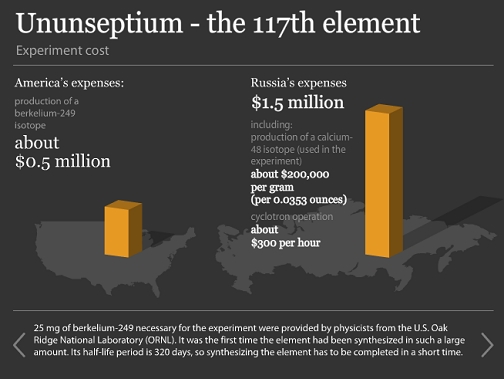
Of all the transuranium elements, only plutonium is widely used, as the key component in the production of nuclear weapon and as fuel for nuclear reactors.
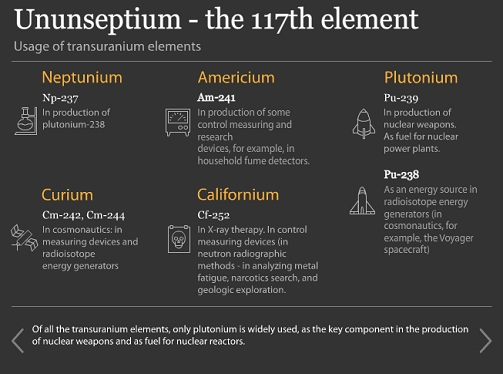
SOURCE: RIA Novosti
DATE: November 02, 2009